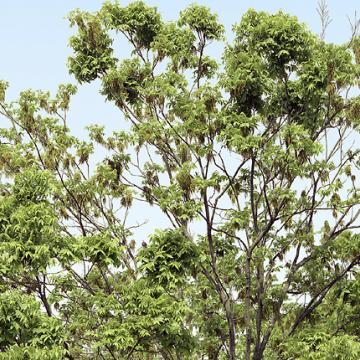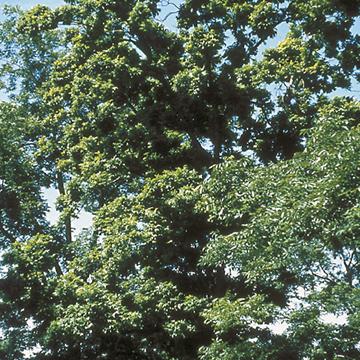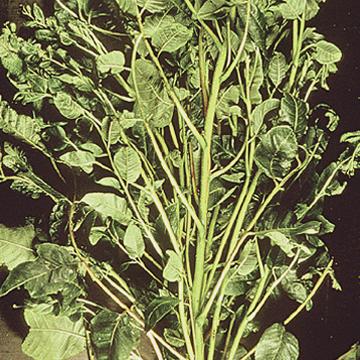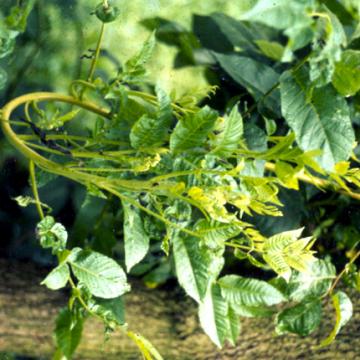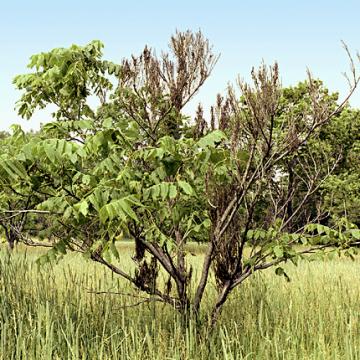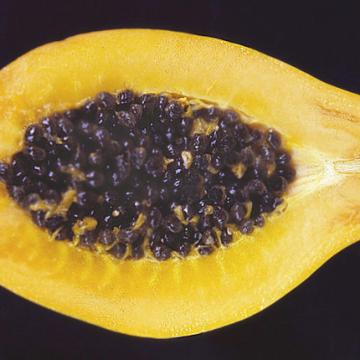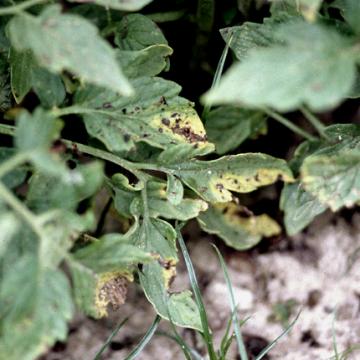DISEASE: Bunch disease
HOST: Hickory
Bunch disease of shagbark hickory caused by a phytoplasma.

Bunch disease | Hickory
DISEASE: Bunch disease
HOST: Hickory (Carya sp.)
PATHOGEN: 'Candidatus Phytoplasma' sp.
PATHOGEN SYNONYM: Phytoplasma (undefined)
SOURCE: P. Fenn
DISEASE: Bunch disease
HOST: Pecan
Pecan exhibiting bunch symptoms at ends of branches. This disease is thought to be caused by a phytoplasma similar to the walnut bunch pathogen in the X-disease group.

Bunch disease | Pecan
DISEASE: Bunch disease
HOST: Pecan (Carya illinoinensis)
PATHOGEN: 'Candidatus Phytoplasma pruni'
PATHOGEN SYNONYM: Phytoplasma X-disease group
SOURCE: W. Sinclair
DISEASE: Bunch disease
HOST: Pecan
Severe case of bunch disease. Note bunches of foliage.
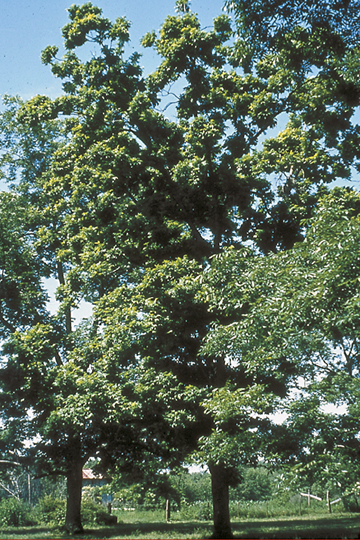
Bunch disease | Pecan
DISEASE: Bunch disease
HOST: Pecan (Carya illinoinensis)
PATHOGEN: 'Candidatus Phytoplasma pruni'
PATHOGEN SYNONYM: Phytoplasma X-disease group
SOURCE: P. Bertrand
DISEASE: Bunch disease
HOST: Walnut
Foliage with bunchlike symptoms.
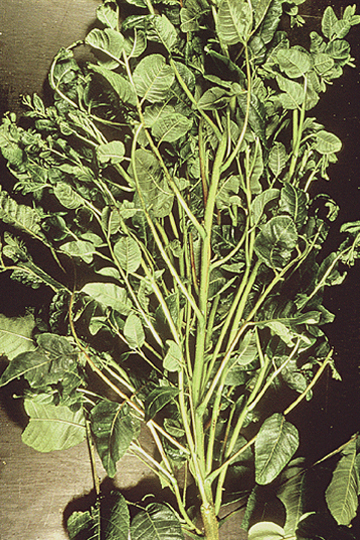
Bunch disease | Walnut
DISEASE: Bunch disease
HOST: Walnut (Juglans nigra)
PATHOGEN: 'Candidatus Phytoplasma pruni'
PATHOGEN SYNONYM: Phytoplasma X-disease group
SOURCE: R. Green
DISEASE: Bunch disease
HOST: Walnut
Twisted shoot with yellow leaves, a symptom of bunch disease.
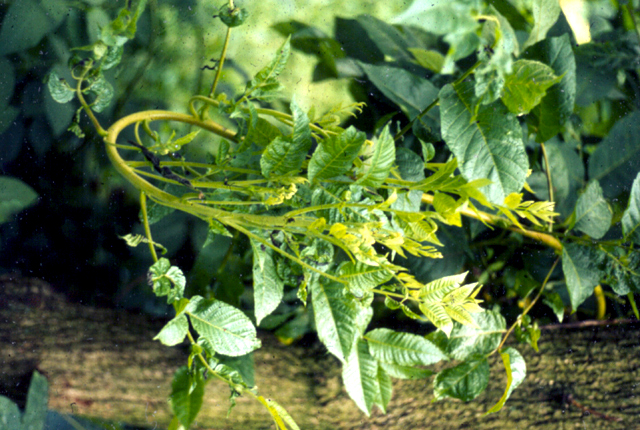
Bunch disease | Walnut
DISEASE: Bunch disease
HOST: Walnut (Juglans regia 'Hartley')
PATHOGEN: 'Candidatus Phytoplasma pruni'
PATHOGEN SYNONYM: Phytoplasma X-disease group
SOURCE: E. Braun
DISEASE: Bunch disease
HOST: Walnut
Tree with advanced disease symptoms of branch and twig death.

Bunch disease | Walnut
DISEASE: Bunch disease
HOST: Walnut (Juglans microcarpa)
PATHOGEN: 'Candidatus Phytoplasma pruni'
PATHOGEN SYNONYM: Phytoplasma X-disease group
SOURCE: W. Sinclair
DISEASE: Internal yellowing
HOST: Papaya
Yellow discoloration of flesh. The affected area is soft and has an acrid odor.
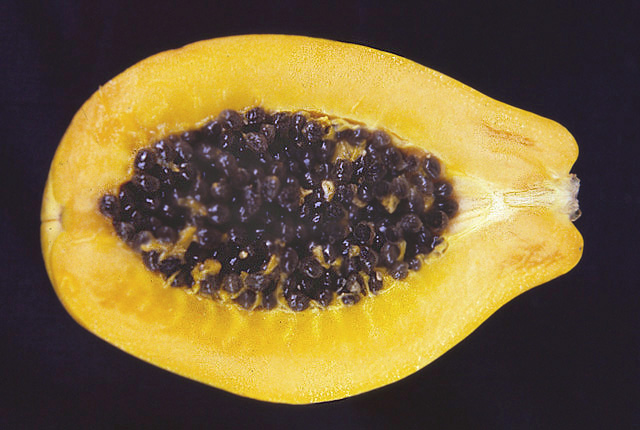
Internal yellowing | Papaya
DISEASE: Internal yellowing
HOST: Papaya (Carica papaya)
PATHOGEN: Enterobacter cloacae
SOURCE: K. Nishijima
DISEASE: Syringae leaf spot
HOST: Tomato
Leaves with brown necrotic lesions and chlorotic margins. Symptoms vary greatly among cultivars. Some have black or brown lesions with bright yellow, chlorotic areas and others do not have yellowing.

Syringae leaf spot | Tomato
DISEASE: Syringae leaf spot
HOST: Tomato (Lycopersicon esculentum)
PATHOGEN: Pseudomonas syringae pv. syringae
SOURCE: R. Gitaitis



